Inbox and Environment News Issue 247
January 17 - 23, 2016: Issue 247
4nature Inc v Centennial Springvale Pty Limited and Others
January 11, 2016: EDO NSW
On behalf of 4nature Inc, EDO NSW has launched landmark legal action against a decision by the NSW Planning Assessment Commission (PAC) to approve an extension to the Springvale coal mine underneath the Newnes State Forest in the Blue Mountains.
The approval will allow the mine operator – Centennial Coal – to extract 4.5 million tonnes of coal per year for a further 13 years and discharge large amounts of polluted water into the river system that forms part of Sydney’s drinking water catchment.
This is the first case to test laws passed in 2009 that were introduced to protect Sydney’s drinking water catchment.
The Springvale mine will discharge millions of litres of highly saline mine water every day into the Coxs River, which flows into Lake Burragorang – Sydney’s major drinking water reservoir. Water discharged from the mine also contains nitrogen, phosphorus, zinc, nickel and other contaminants.
The case is in the NSW Land and Environment Court and 4nature is taking the owners of the mine (Centennial Springvale Pty Limited and Springvale SK Kores Pty Limited) and the Minister for Planning to challenge over the approval.
In 2009, the NSW Government introduced laws designed to protect Sydney’s drinking water catchment. Under those laws, a development cannot be approved unless the consent authority is satisfied that the development will have a ‘neutral or beneficial’ effect on water quality.
Because the Springvale mine extension lies within the Sydney drinking water catchment, the project should not have been approved unless the PAC was satisfied the development would have a neutral or beneficial effect on water quality.
4nature argues that there is no evidence the PAC was satisfied the project would have a neutral or beneficial effect on water quality, which 4nature contends would be very difficult given the volumes of polluted water the mine will discharge into the river system each day. As such, 4nature argues that the PAC’s approval of the project was unlawful.
EDO NSW is grateful to barrister Richard Lancaster SC for his assistance in this matter.
Government's large-scale solar funding initiative receives big response
Media release: 14 January 2016 - The Hon. Greg Hunt MP, Minister for the Environment
The Government's $350 million commitment for new large-scale solar projects has generated significant interest in the sector with high-quality proposals now set to advance to the next stage.
Twenty-two (22) eligible expressions of interest (EOIs) received by the Australian Renewable Energy Agency (ARENA) for its $100 million large-scale solar photovoltaic (PV) competitive round have been short-listed and invited to submit full applications for consideration.
The short-listed proposals were chosen from a very strong field demonstrating Australia is ready to invest in utility-scale renewable energy options suited to the 21st century.
The 22 EOIs are seeking $332 million for projects totalling $1.68 billion to deploy large-scale solar farms in Queensland (10), New South Wales (8), Victoria (2), South Australia (1) and Western Australia (1).
Although Australia leads the world in rooftop solar PV and costs have dropped significantly in recent years, large-scale solar in Australia is lagging behind with higher supply chain costs than other comparable countries and only 240 megawatts (MW) total large-scale generation capacity.
ARENA's large-scale solar competitive round is designed to support the development of approximately 200 MW of large-scale solar capacity and reduce costs.
An additional 200 MW would significantly boost Australia's large-scale capacity, with the combined 440 MW total of large-scale solar able to generate up to 860,000 MWh of electricity each year, enough to power 120,000 average Australian homes.
The short-listed projects set to progress to the next stage of ARENA's funding round have a total capacity of 766 MW.
A number of those short-listed are seeking project finance from the Clean Energy Finance Corporation (CEFC) under its $250 million large-scale solar program, which offers successful ARENA grant recipients the opportunity to secure long-term debt finance to progress their projects.
Further information is available online
EPA investigating another dam wall collapse at Warkworth mine
Media release: 15 January 2016
The NSW Environment Protection Authority (EPA) is investigating another collapse of part of a sedimentation dam wall at the Warkworth coal mine in the Hunter Valley.
Warkworth personnel contacted the EPA regarding the partial collapse of the wall on 6 January. At that time, the company indicated that the event had not caused or threatened material harm to the environment. Nonetheless, the EPA requested an incident report.
The company also advised the EPA that it had undertaken work to contain the sediment laden water. However, photographs provided to the EPA on 15 January suggest that sediment laden water – made up of soil and sand is continuing to leave the site, and a quantity of sediment from the original incident is yet to be cleaned up.
The EPA has requested additional information from Warkworth and will be conducting a site inspection to assess the impact. Depending on the outcome of the investigation, the EPA will consider further regulatory action.
The EPA has also directed the company to clean-up the site to prevent further mobilisation of sediment, both on and off the site, and clean up the accumulated sediment that has already left the site.
EPA investigating incident at Wambo Coal mine
Media release: 13 January 2016
The NSW Environment Protection Authority (EPA) is investigating an incident at the Wambo Coal Mine at Warkworth in the Hunter Valley which resulted in a portion of the dam wall collapsing and, discharging sediment laden rainwater to the environment.
The EPA was informed of the incident on Monday evening after Wambo Coal reported it to the Environment Line.
The company says the dam wall may have collapsed last week but says it only came to the attention of mine staff on Monday.
EPA officers were onsite on Tuesday to carry out an inspection and to interview mine personnel. Samples were also taken for testing.
EPA North Director, Gary Davey said the amount of material that might have left the site from the dam is unknown at this stage.
“Communities across the Hunter and Mid-North Coast regions have just experienced record rainfall over the last seven days. While this is a factor to consider, the EPA’s investigation will also examine how the dam, which was used as a sediment control measure, is managed, maintained and monitored.
“The EPA is also concerned that it took nearly a week for mine personnel to discover the problem and report it. An assessment of the monitoring systems currently in place at the mine will form part of our investigation,” Mr Davey said.
“Wambo Coal, like all environment protection licence holders, has a responsibility to comply with the conditions set out in its licence and to ensure its activities do not cause harm to the environment. It is important that the company has appropriate procedures in place to ensure that its systems and safeguards do not fail. However, in the event of a failure, it is vital that there is an early warning process so that action can be taken quickly and the EPA notified.”
“Failure to meet these requirements can be a breach of environmental legislation and may result in regulatory action from the EPA.
“The Hunter River catchment is a sensitive environmental area, relied upon by industry, farmers and the wider community for its freshness and good water quality.
“The EPA will be carrying out a thorough investigation of the incident and has also requested a full incident report from Wambo Coal.”
David Attenborough's Great Barrier Reef: An Interactive Journey
Explore at: http://attenboroughsreef.com
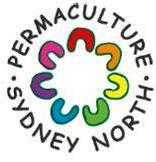 EDIBLE WEEDS TOUR
EDIBLE WEEDS TOUR
Sunday, February 7, 2016: 10:00am – 11:00pm
Naturalist Diego Bonetto will introduce you to the wonders and possibilities of edible weeds on a two hour urban tour on the northern beaches. Building on the knowledge acquired while growing up on a farm in Italy, Diego introduces people to the ever-present food and medicine plants that surround us. To some plantain, dandelion, chickweed and sow-thistle are a nuisance, to others they are a delicious salad and a seasonal treat. Learn about the most common species growing in your garden, along the green belts and in parks and reserves. Find out how they have been used for food, craft and natural remedies and discover ways to safely harvest from the urban 'wild' and enrich your diet with vitamins and minerals.
Please be quick to register as we are set to a maximum of 25 people for our exclusive Permaculture Northern Beaches weed tour.
$25 non-members, $20 members.
Bookings are essential contact: Cathy.natoli@hotmail.com

Bushcare in Pittwater
Where we work Which day What time
Avalon
Angophora Reserve 3rd Sunday 8:30 - 11:30am
Avalon Dunes 1st Sunday 8:30 - 11:30am
Avalon Golf Course 2nd Wednesday 3 - 5:30pm
Careel Creek 4th Saturday 8:30 - 11:30am
Toongari Reserve 3rd Saturday 9 - 12noon (8 - 11am in summer)
Bangalley Headland 2nd Sunday 9 to 12noon
Bayview
Winnererremy Bay 4th Sunday 9 to 12noon
Bilgola
North Bilgola Beach 3rd Monday 9 - 12noon
Algona Reserve 1st Saturday 9 - 12noon
Plateau Park 1st Friday 8:30 - 11:30am
Church Point
Browns Bay Reserve 1st Tuesday 9 - 12noon
McCarrs Creek Reserve Contact Bushcare Officer To be confirmed
Clareville
Old Wharf Reserve 3rd Saturday 8 - 11am
Elanora
Kundibah Reserve 4th Sunday 8:30 - 11:30am
Mona Vale
Mona Vale Beach Basin 1st Saturday 8 - 11am
Mona Vale Dunes 2nd Saturday+3rd Thursday 8:30 - 11:30am
Newport
Bungan Beach 4th Sunday 9 - 12noon
Crescent Reserve 3rd Sunday 9 - 12noon
North Newport Beach 4th Saturday 8:30 - 11:30am
Porter Reserve 2nd Saturday 8 - 11am
North Narrabeen
Irrawong Reserve 3rd Saturday 2 - 5pm
Palm Beach
North Palm Beach Dunes 3rd Saturday 9 - 12noon
Scotland Island
Catherine Park 2nd Sunday 10 - 12:30pm
Elizabeth Park 1st Saturday 9 - 12noon
Pathilda Reserve 3rd Saturday 9 - 12noon
Warriewood
Warriewood Wetlands 1st Sunday 8:30 - 11:30am
Whale Beach
Norma Park 1st Friday 9 - 12noon
Western Foreshores
Coopers Point, Elvina Bay 2nd Sunday 10 - 1pm
Rocky Point, Elvina Bay 1st Monday 9 - 12noon
One step closer to an extended Thredbo Valley Track
Media release: 11 January 2016
An extension to the popular Thredbo Valley Track is now one step closer following approval of the National Parks and Wildlife Service (NPWS) project that will create a world-class mountain biking and hiking experience through the Snowy Mountains.
NPWS recently appointed Dirt Art Pty Ltd, specialist recreational trail designers to construct the ‘Lower’ Thredbo Valley Track through the secluded section of the valley in Kosciuszko National Park.
Anthony Evans, NPWS Alpine-Queanbeyan Area Manager, said the existing 17km track from Thredbo Village to Lake Crackenback has exceeded visitor number expectations since it officially opened in 2015.
“We are thrilled to be able to extend a unique and very popular asset that will increase visitation to Kosciuszko National Park and cement the wider Snowy Region as an iconic destination for mountain biking,” Mr Evans said.
“The planned extension will start at Bullocks Flat, taking riders and hikers along the Thredbo River and up switch-back climbs where they will enjoy the sub-alpine scenery and vistas down to the river.
“There are currently no roads or trails in this area so once complete the Lower Thredbo Valley Track will take people safely through previously inaccessible and rugged country offering a truly unique experience,” Mr Evans said.
Plans to extend the track have involved the Snowy River Shire Council, Department of Primary Industries (DPI), Resorts and community stakeholders who want to create a world-class continuous track linking Thredbo to Jindabyne and beyond to Tyrolean Village.
A proposed new community trail outside Kosciuszko National Park would complete this idea and link the end of the Lower Thredbo Valley Track to Curiosity Rocks at Jindabyne Dam where there is an existing network of trails.
Dirt Art are expected to begin construction early this year.
The tender also includes planned walking track upgrades on the Main Range around Blue Lake and Mt Carruthers. Improvements to these walking tracks will be undertaken by Jindabyne Landscaping and are expected to start over summer. All walking tracks will remain open during these works, however there will be some short diversions around work sites.
For more information on the Lower Thredbo Valley Track project, visit: www.environment.nsw.gov.au/lower-thredbo-valley-track.htm

Pittwater's Wildlife Protection Areas
Pittwater is a very biodiverse area and currently has 25 declared Wildlife Protection Areas (WPAs) established in accordance with the NSW Companion Animals Act 1998. This is in recognition that these areas are of significant ecological value and provide vital habitat for native fauna.
A list of WPAs in Pittwater may be found atwww.pittwater.nsw.gov.au/wpas
Cats are prohibited in ALL Wildlife Protection Areas whilst dogs are prohibited in Bangalley Head, Deep Creek Foreshore Reserve, Turimetta Headland, Ingleside Chase Reserve, Irrawong Reserve, Warriewood Wetlands, and Careel Bay Intertidal Area. In all other WPAs dogs are permitted provided they are on a lead and remain on the designated path.
Early in the new year Pittwater Council will commence a trial program to manage cats in a select number of Wildlife Protection Areas. These have been selected because of high diversity and reported issues with cats. Residents adjacent to these reserves will be notified prior to program commencement and signage installed at all reserve entrances. During the program period, cats found roaming these areas will be taken to the Pittwater Animal Hospital. All cat owners are encouraged to ensure their pets are microchipped, registered with Council and correct contact details are maintained.
Owners of cats found within WPAs are liable for fines.
It is not only our wildlife that benefit from keeping domestic and feral animals out of WPAs it is our pets themselves. This keeps them safe from ticks, snakes and spiders, prevents injuries caused by fighting with other domestic animals or native fauna, reduces the likelihood of contracting diseases and minimises the risk of being hit by a motor vehicle.
Native wildlife is particularly vulnerable to cat and dog predation as they have no effective defence mechanisms against introduced predators or infections or diseases (e.g. toxoplasmosis) associated with injury. Council looks forward to working with the community to ensure these Wildlife Protection Areas remain a safe haven for our precious native fauna.
For more information please contact Sonja Elwood on 9970 1308.
Restoring Bilgola - Newport Escarpment Project: 2016
Have you noticed all the bamboo being removed just past The Serpentine as you travel north along Barrenjoey Road?
These works are part of the planned removal of environmental weeds and restoration works within this catchment. Large areas that are severely degraded such as this location, will be replanted with local native species that enable a healthy natural system to respond and adapt and support the full range of our native plants and animals.
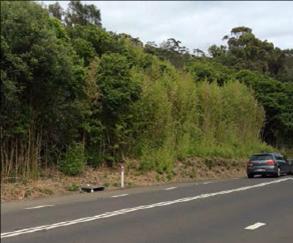
Before bamboo removal
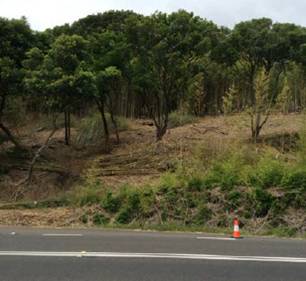
Works in progress after bamboo removal
Bush regeneration and weed control is being undertaken within the upper and lower areas of this escarpment from South Bilgola Headland down to Bilgola Surf Club and on the upper and lower bushland areas to Old Barrenjoey Road! The project is enabling major restoration works to be carried out throughout the Bilgola Newport Escarpment. The overall project has a budget of $160,000 and aims to be completed by 30 June 2016.
Two endangered native plant communities are located within the escarpment, Littoral or Coastal Rainforest and Themeda Grasslands on Coastal Headlands, as well as three other vegetation communities, making this location rich with a wide variety of native flora species.
Over 1725 local native tubestock have been grown from seed and will be planted by volunteers and bush regeneration contractors under the guidance of Council.
Would you like to help with this project?
Community residents and volunteers work at the Bilgola Beach Bushcare site on the 3rd Monday of each month from 9am – 12noon.
Can only help on the weekend?
There are several planned community planting events to be held on weekends in March and April at South Bilgola Headland and at the Bilgola Bushcare site (dates to be confirmed). Please call the Bushcare Officer if interested in participating in any events or for further details on this project call the Bushland Management Officer on 9970 1363.
Live locally? Want to help?
Simply remove all noxious and environmental weeds on your property as this will help to stop the spread of these species into our bushland areas. If you need some help to identify the weeds then call Pittwater Council or visit the website to find out more information – www.pittwater.nsw.gov.au/weeds
Pittwater Council’s ‘Bilgola Creek biodiversity’ project is supported by the Sydney Coastal Councils Group through funding from the Australian government.



Grevillea Caleyi Seed Collection at Ingleside: PNHA

Volunteers at the Pittwater Natural Heritage Association (PNHA) bush regeneration project at the Baha’i Temple, Ingleside had a special demonstratio n at their December bushcare morning when staff of the Royal Botanic Gardens undertook collection of seeds from the critically endangeredGrevillea caleyi.
n at their December bushcare morning when staff of the Royal Botanic Gardens undertook collection of seeds from the critically endangeredGrevillea caleyi.
Grevillea caleyi is restricted to small pockets within the Terrey Hills, Duffys Forest, Belrose and Ingleside areas. The Royal Botanic Gardens will be collecting seed from these sites for storage in the Australian PlantBank at the Mount Annan Australian Botanic Garden to provide long term back-up in case of any loss that may occur to the species in its natural habitat.
Meanwhile the PNHA bush regeneration project continues, with the dedicated team of volunteers including members of the Baha’i congregation working alongside professional bush regenerators to give this population of Grevillea caleyi a chance to increase.
They welcome new volunteers, so if you are interested in helping on the project in 2016 call David Palmer on 0404 171 940.
NSW Container Deposit Scheme: Have Your Say
On 21 February 2015, the Premier, the Hon. Mike Baird MP, announced the implementation of a container deposit scheme (CDS) by 1 July 2017.
A container deposit scheme (CDS) uses rewards to encourage people to return their drink containers to a collection point. CDSs are a way to reward environmentally responsible behaviour, reduce drink container litter and increase recycling.
The NSW Container Deposit Scheme Discussion Paper is your opportunity to tell us what kind of CDS you would like to see in NSW.
This discussion paper has been prepared by the NSW Environment Protection Authority, on behalf of the Container Deposit Scheme Advisory Committee, appointed by the Minister for the Environment.
Have your say
Submit your feedback on the discussion paper by Friday 26 February 2016.
For more information, visit the EPA website.
Online Consultation
Date: Dec. 18, 2015 - Feb. 26, 2016, Time: 10:30pm — 12:00pm
More Information container.deposit@epa.nsw.gov.au or (02) 9995 5555 Agency Website

WetlandCare Australia and Conservation Volunteers Australia invite photographers of all ages to enter the Wetlands in Focus photography prize.
Join us in celebrating and sharing Australia’s wonderful wetlands and waterways!
It’s easy and free to enter and get involved – just capture your favorite Australian wetland flora (plant), fauna (animal) or landscape on camera, and submit your shot in the easy to use form on the Wetland Care Australia website.
There’s even a category for photos of wetland volunteers in action, the perfect way to showcase the hard work and dedication of wetland carers around the nation.
All entries will be publicly displayed, with Entrant’s Name, Entry Title, Artists Statement and category entered into, on the WetlandCare Australia Facebook page where you and all your friends can vote for the People’s Choice Prize by liking your fave photo.
Wetlands in Focus is dedicated to spreading the word about Australia’s amazing wetlands and the fantastic people like you who care about them.
Entries are open right up to the end of February 2016, which will be a month of wetland celebrations and events, marking World Wetlands Day.
Entries close February 29 2016, voting for the People's Choice closes March 3 2016.
World Wetlands Day falls on February 2nd each year and commemorates the anniversary of the signing of the Ramsar Convention on Wetlands of International Importance on the 2nd February 1971.
The theme for World Wetlands Day 2016 is Wetlands for our Future: Sustainable Livelihoods
There will be wetland themed events happening in locations around Australia during February 2016, watch this space for more details!
For Prize Details and to Enter visit the Wetland Care Australia website.
Community Gardens in Pittwater
Come along to Woolcott Street, Newport and join the community garden group. The garden started to take shape just before Christmas when a local resident constructed five raised garden beds. One bed is pine and the others are hardwoods sourced from the Hunter Valley. They look fabulous!
The garden beds were filled with soil three days before Christmas and by the time this goes to print, they will be full of vegetables. You are welcome to come along and join the group of gardeners at Woolcott Street, or if you live north of ‘The Bends’, you may prefer the community garden at Barrenjoey High School. Contact details for both groups are:
Woolcott Street, Newport: peninsulacommunitygarden@outlook.com
Barrenjoey High School: garden@pcga.org.au
 Community Gardens bring people together and enrich communities. They build a sense of place and shared connection.
Community Gardens bring people together and enrich communities. They build a sense of place and shared connection.
Pittwater Community Gardens PROFILE
Pittwater Community Gardens is a community led initiative to create accessible food gardens in public places throughout the Pittwater area. Our aim is to share skills and knowledge in creating fabulous local, organic food. But it's not just about great food. We also aim to foster community connection, stimulate creative ideas for community resilience and celebrate our abundance. Open to all ages and skills, our first garden is on the grounds of Barrenjoey High School (off
www.pcga.org.
Reforms to Better Manage Our Coast
Planning Minister Rob Stokes today (13.11.2015) released draft reforms for consultation to make coastal management in NSW simpler, forward-thinking and easier to implement.
“The NSW Government recognises the importance of our state’s saltwater economy and we want to see thriving, resilient communities living, working and playing on a healthy coast now and into the future,” Mr Stokes said.
“We want to replace and improve on the outdated and complex web of laws managing our coast. The current Act is complex, difficult to navigate, and its one-size-fits all approach is no longer fit for purpose.
“Since the original Coastal Protection Act was enacted in 1979 our understanding of coastal processes has improved dramatically. We know our coastline is not a fixed object, but a dynamic, ever-changing environment with a range of natural processes.”
The reforms include:
• A draft Bill for a new Coastal Management Act.
• Key elements of a new Coastal Management Manual.
• Proposals for a new Coastal Management State Environmental Planning Policy (SEPP).
The draft Bill redefines the coast as four distinct areas of coastal wetlands and littoral rainforests; coastal vulnerability areas; coastal environment areas and coastal use areas to identify each area’s unique management requirements.
The manual will provide guidance to local councils and clear, step-by-step instructions to support them to manage their coast using the new Coastal Management Act.
The new SEPP will help manage the legacy of existing coastal hazards and help plan to ensure new hazards are avoided.
A three-month consultation period will run to ensure everyone has a chance to have their say. Go to www.haveyoursay.nsw.gov.au
_____________________________
Our future on the coast: NSW coastal management reforms
The public consultation package includes a draft Coastal Management Bill, an Explanation of Intended Effect for the proposed new Coastal Management State Environmental Planning Policy (SEPP), and key elements of a draft coastal management manual.
Additional elements of the proposed new framework will be released later for public comment, including further components of the manual, maps of the coastal zone that will form part of the SEPP and proposals concerning the effects of coastal erosion on coastal boundaries.
Have your say
The public is invited to read the documents for consultation and provide feedback about the new approach.
Submit feedback by 29 February 2016 via emailcoastal.reforms@environment.nsw.gov.au, online consultation form or post to:
Office of Environment and Heritage, PO Box A290 , Sydney South. NSW 1232
Have your say on biosecurity management in NSW
NSW Department of Primary Industries Media Release
Landowners, community and industry are encouraged to have their say on how biosecurity risks are managed in NSW, as consultation gets underway surrounding the regulations to support the new Biosecurity Act 2015.
The Department of Primary Industries (DPI) Deputy Director General, Bruce Christie, said the Biosecurity Act 2015 provides an opportunity to review how biosecurity risks are managed in NSW.
“Biosecurity protects our $12 billion primary industries sector, our food supply, our native flora and fauna and our infrastructure and assets from adverse impacts of animal and plant pests, diseases and weeds,” said Mr Christie.
“The Act aims to minimise these threats while simultaneously reducing red tape surrounding its management.
“However, before the Biosecurity Act 2015 commences supporting regulations need to be developed.
“This initial consultation phase will provide an opportunity for us to review how biosecurity risks are managed and work together to develop a simple but solid management system.
“We are calling for feedback on how best to manage these risks so that we can ensure the regulations we develop are flexible and responsive to them, while also meeting business, environmental and community expectations.
“Dedicated materials and discussion papers are now available online and we welcome comment and feedback from landowners, community and industry.”
Topics include aquatic biosecurity, animal biosecurity, plant biosecurity, stock foods, fertilisers and chemical residue, weeds, animal pests, certification and auditing.
“Biosecurity can often be taken for granted, however it’s vital for the health, wellbeing and prosperity of everyone in NSW,” said Mr Christie.
“Biosecurity is a shared responsibility and together we can protect NSW’s strong economy, safe healthy food supply and unique natural environment.”
The closing date for initial feedback on the papers is Friday 12 February 2016, while there will be further ongoing consultation over the next 12 months as the regulations are developed.
For more information visit www.dpi.nsw.gov.au/biosecurityact
Giant icebergs play key role in removing carbon dioxide from atmosphere
January 11, 2016
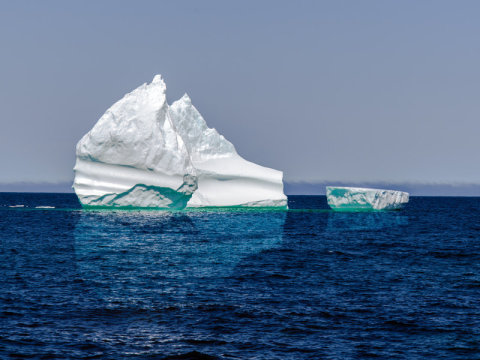
Carbon sequestration, which contributes to the long-term storage of atmospheric carbon dioxide, helps to slow global warming. Now researchers have found that giant icebergs are responsible for storing up to 20 percent of carbon in the Southern Ocean. Credit: © Sergey Shlyaev / Fotolia
Pioneering research from the University of Sheffield's Department of Geography discovered melting water from giant icebergs, which contains iron and other nutrients, supports hitherto unexpectedly high levels of phytoplankton growth.
This activity, known as carbon sequestration, contributes to the long-term storage of atmospheric carbon dioxide, therefore helping to slow global warming.
During the study, which is the first of its kind on this scale, a team of scientists led by Professor Grant Bigg analysed 175 satellite images of ocean colour -- which is an indicator of phytoplankton productivity at the ocean's surface -- from a range of icebergs in the Southern Ocean which were at least 18 km in length.
The images from 2003-2013 showed that enhanced phytoplankton productivity, which has a direct impact on carbon storage in the ocean, extends hundreds of kilometres from giant icebergs, and persists for at least one month after the iceberg passes.
Professor Bigg said: "This new analysis reveals that giant icebergs may play a major role in the Southern Ocean carbon cycle.
"We detected substantially enhanced chlorophyll levels, typically over a radius of at least four-10 times the iceberg's length.
"The evidence suggests that assuming carbon export increases by a factor of five-10 over the area of influence and up to a fifth of the Southern Ocean's downward carbon flux originates with giant iceberg fertilisation.
"If giant iceberg calving increases this century as expected, this negative feedback on the carbon cycle may become more important than we previously thought."
The Southern Ocean plays a significant part in the global carbon cycle, and is responsible for approximately 10 per cent of the ocean's total carbon sequestration through a mixture of biologically driven and chemical processes, including phytoplankton growth.
Previous studies have suggested that ocean fertilization from icebergs makes relatively minor contributions to phytoplankton uptake of CO2.
However this research, published in Nature Geoscience, shows that melting water from icebergs is responsible for as much as 20 per cent of the carbon sequestered to the depths of the Southern Ocean.
Luis P. A. M. Duprat, Grant R. Bigg, David J. Wilton. Enhanced Southern Ocean marine productivity due to fertilization by giant icebergs. Nature Geoscience, 2016; DOI:10.1038/NGEO2633
Tough times for the tree of life on coral reefs
January 12, 2016
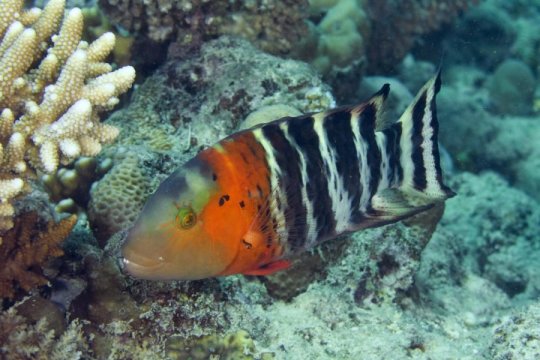
In terms of evolutionary history, less than a quarter of wrasse species receive minimum protection levels. Credit: João Paulo Krajewski
Marine scientists are calling for a re-think of how marine protected areas (MPAs) are planned and coordinated, following a global assessment of the conservation of tropical corals and fishes.
Researchers from the Australian Research Council Centre of Excellence for Coral Reef Studies (Coral CoE), at James Cook University in Townsville, analysed the extent to which the evolutionary histories of corals and fishes are protected, rather than looking at individual species.
"Our interest was in evolutionary branches of the tree of life, rather than the traditional focus on rare, threatened or endemic species," said Professor David Bellwood from the Coral CoE.
"In particular we were interested in the longer branches, which represent the greater proportion of evolutionary history.
"When we looked at tropical Marine Protected Areas from that perspective, we found that protection of corals and fishes falls significantly short of the minimum conservation target of protecting 10 per cent of their geographic ranges.
"Just one sixteenth of hard corals species are afforded that minimum level of protection, and for fishes -- the wrasses -- less than a quarter reach minimum protection levels."
Professor Bellwood said that while it was still useful to focus on the conservation of rare, threatened and endemic species, planning protected areas around evolutionary history helped provide a deeper perspective.
"In effect, we are looking at protecting the reef equivalent of cultural heritage, the critically important history of living organisms," he said.
"It is not just species that need protection but the genetic history that they contain. In a changing world this evolutionary diversity is likely to be increasingly important, as reefs respond to new challenges.
The researchers found that the shortfall in protection for corals was greatest in the Atlantic and the Eastern Pacific.
For fishes, the highest concentrations of poor protection are in the Western Indian Ocean and the Central Pacific.
"Even though our estimates are highly conservative, the inescapable conclusion is that most evolutionary branches of the tree of life on coral reefs are inadequately protected by the current system of Marine Protected Areas," Professor Bellwood said.
Around 830,000 multi-cellular species call the world's threatened coral reefs home, and half a billion people rely on the reefs for ecosystem services including food security, income and protection against natural hazards.
"MPAs continue to provide important and essential protection to certain species and habitats, but the bigger evolutionary picture needs to be considered in planning and coordinating the choice and location of future protected areas," Professor Bellwood said.
"This is especially important in light of chronic decline due to deteriorating water quality and periodic damage by coral bleaching and cyclones."
D. Mouillot, V. Parravicini, D.R. Bellwood, F. Leprieur, D. Huang, P.F. Cowman, C. Albouy, T.P. Hughes, W. Thuiller and F. Guilhaumon.Global marine protected areas do not secure the evolutionary history of tropical corals and fishes. Nature Communications, January 2016 DOI:10.1038/ncomm10359
Intelligent sensors map out presence of chemical pollutants in the sea
January 11, 2016
Developed at the Polytechnic University of Valencia, the sensors not only detect pollutants in very small quantities, but also work to establish the exact size and location of the polluted area.
Researchers at the Universitat Politècnica de València (Polytechnic University of Valencia, UPV) have designed an intelligent sensor system which enables the immediate detection and delimitation of toxic waste, diesel, and hydrocarbons in general in any body of water. So far tested under laboratory conditions only, it is able to detect even very small concentrations of chemical pollutants and maps out their precise location and spread.
Sea pollution is a serious global issue that has adverse effects on not only the immediate natural environment (marine fauna and flora), but also on human health and the economy.
Jaime Lloret from the UPV's Research Institute for Integrated Management of Coastal Areas (ICIC) spells out the importance of a device like the one being developed: "Different chemical pollutants require different techniques for their clean-up. But the single most important factor for minimising the impact and damages to the affected area is how quickly they is detected. This is particularly critical in the case of oil spills, where a full clean-up is virtually impossible if decontamination efforts don't start immediately."
The sensors developed by UPV researchers are embedded in small floating devices. Based on sophisticated algorithms, the system is made up of several such wireless nodes that move independently through the spill in search of its outer limits.
"The nodes use the real-time data collected via their hydrocarbon sensors and their relative positions to seek out the edges of the spill, the point where it meets non-contaminated water. By doing so the system is able to provide information as to the exact location and extent of the spill" (Lloret).
This sensor system is the result of one of the main lines of research to emerge from the UPV's master's degree in the Assessment and Environmental Monitoring of Marine and Coastal Ecosytems, and was presented at 2015's IEEE International Conference on Communication
The above is reprinted from materials provided by Asociación RUVID.
Journalist Peter Greste to deliver UNSW’s 2016 Gandhi Oration
12 JAN 2016 - UNSW MEDIA
Award-winning journalist Peter Greste will deliver UNSW’s 2016 Gandhi Oration on Friday 29 January.
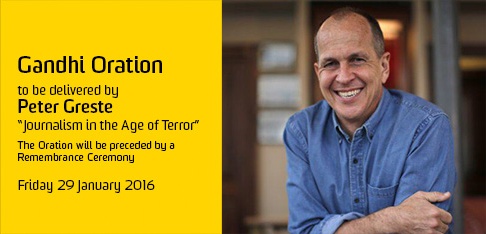
The annual oration commemorates India’s Martyrs’ Day, the anniversary of Mahatma Gandhi’s assassination on 30 January 1948, and is delivered by a person whose life work exemplifies Gandhian ideals.
An acclaimed campaigner for freedom of the press, Greste will address the topic "Journalism in the Age of Terror".
The Australian-born foreign correspondent was jailed for 400 days in 2013 on confected terrorism charges along with two colleagues while working in Egypt for Al Jazeera English.
He was sentenced to seven years in prison after a trial that was widely dismissed as a sham, but in February 2015, after intense international pressure, he was deported to Australia under a presidential decree. He was later granted a full pardon by the Egyptian government.
As a result of the letters he wrote from prison in the defense of freedom of the press, Greste won a Walkley Award for most outstanding contribution to journalism in 2014, and Royal Television Society and Tribeca Disruptive Innovation Awards in 2015.
He has also been awarded the International Association of Press Clubs’ Freedom of Speech Award; and the Australian Human Rights Commission Medal.
Prior to his incarceration in Egypt, Greste covered the civil war in Yugoslavia and elections in South Africa as a freelance reporter. He joined the BBC as its Afghanistan correspondent in 1995 and went on to cover Latin America, the Middle East and Africa. In 2011, he won a Peabody Award for a BBC documentary on Somalia before joining Al Jazeera as its East Africa correspondent.
The Gandhi Oration, which is sponsored by Tata Consultancy Services and the Australia India Institute, is preceded by a Remembrance Ceremony to be held on the University’s Library Lawn. Guests are encouraged to attend both the Ceremony and the Oration.
What: 2016 Gandhi Oration and Remembrance Ceremony
When: 5.15pm for 5.30pm start (Ceremony), 6.00pm for 6.15pm start (Oration), Friday 29 January 2016
Where: Library Lawn and Clancy Auditorium, UNSW Kensington Campus
Registrations are essential for attendance at both events by 20 January 2016.
Heart valves made from tissue rather than metal may be better for middle-aged patients
January 12, 2016
Patients between the ages of 40 and 70 who undergo aortic valve replacement (AVR) may fare better with tissue-based valves rather than metal-based valves, according to a review article posted online by The Annals of Thoracic Surgery.
Mechanical (metal) valves and bioprosthetic (tissue) valves have different benefits and risks, leading to sometimes difficult choices for patients. Mechanical valves have the potential to last longer because they don't wear out, but blood clots tend to form on them so patients must take blood thinners (anticoagulants) for the rest of their lives. Bioprosthetic valves are less likely to cause blood clots, but are less durable and may need to be replaced in the future.
"We combined the best available evidence comparing mechanical valves versus bioprosthetic valves to determine the risks and benefits to patients following surgery, depending on the type of valve they received," said James J. Wu, BMusStudies, from The University of Sydney in Australia. "We hope that our results can give future patients needing AVR more information to help them choose the appropriate replacement valve for their condition."
Wu, Paul G. Bannon, MBBS, PhD, and other colleagues in Australia evaluated 13 studies comparing mechanical valves and bioprosthetic valves in middle-age patients (age 40 to 70 years) undergoing AVR.
At 15-years post-surgery, the researchers found no difference in survival, stroke rate, or rate of endocarditis (infection of the heart lining) among patients with either valve; however, each patient group showed different complications. Patients with bioprosthetic valves were twice as likely as mechanical valve patients to need re-operation because of worn-out valves, while patients with mechanical valves were twice as likely to experience a major bleeding event or a blood clot.
Because patients with major bleeding had a significant increase of death compared to those needing reoperation, the researchers said bioprosthetic valves should strongly be considered for patients in this age group, though valve choice should be individualized for each patient.
"This is a complex decision that requires up-to-date evidence. There are options to reduce the bleeding risk of mechanical valves, so, ideally, a discussion with both the surgeon and cardiologist is warranted to take into account an individual's circumstances," said Dr. Bannon.
James J. Wu, Michael Seco, James B. Edelman, Guy D. Eslick, Michael K. Wilson, Michael P. Vallely, Michael J. Byrom, Paul G. Bannon. Mechanical Versus Bioprosthetic Aortic Valve Replacement in Patients Aged 40 to 70 Years: A Systematic Review and Meta-Analysis. The Annals of Thoracic Surgery, 2016; DOI: 10.1016/j.athoracsur.2015.10.092
Research raises concerns over long-term use of chromium diet pills
January 11, 2016
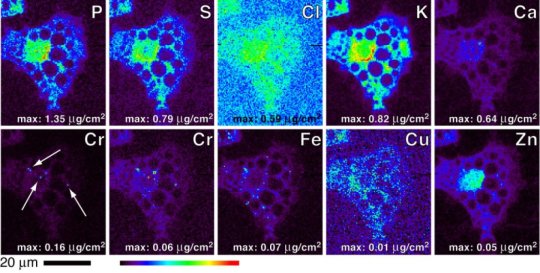
The synchrotron's high energy x-ray beam allowed scientists to identify chromium spots throughout the cell. By using a second high energy beam focused at these spots, the scientists were able to tell that the cell had converted into the carcinogenic form of chromium. The spots are identified by the arrows in this image. Credit: Supplied by University of Sydney
Concerns have been raised over the long-term use of nutritional supplements containing chromium, after an Australian research team found the supplement is partially converted into a carcinogenic form when it enters cells.
Chromium is a trace mineral found primarily in two forms. Trivalent chromium(III) picolinate and a range of other chromium(III) forms are sold as a nutritional supplements, while hexavalent chromium(VI) is its 'carcinogenic cousin'.
The latter gained notoriety from the book and 2000 movie, Erin Brockovich, which linked an elevated cluster of illnesses, including cancer, to hexavalent chromium in the drinking water of the Californian town of Hinkley.
The University of Sydney and UNSW researchers' concerns are based on a study published in the chemistry journal, Angewandte Chemie.
Controversy remains over whether the dietary form of chromium is essential for humans, with an increasing body of evidence indicating it is not safe for humans.
Supplements containing chromium are consumed for the purported treatment of metabolic disorders, such as insulin resistance and type 2 diabetes, but chromium's mechanism of action in the body is not well understood.
Supplements containing chromium are also commonly used for weight loss and body building with some containing up to 500 micrograms per tablet.
The US National Academy of Sciences has estimated up to 200 micrograms of chromium is a safe and adequate daily dietary intake for adults. Australia's current National Health and Medical Research Council Nutrient Reference Values, which are currently under review, recommend 25-35 micrograms of chromium daily as an 'adequate intake' for adults.
In the latest study, the Australian research team treated animal fat cells with chromium(III) in the laboratory. It then created a map of every chemical element contained within the cell using an intense X-ray beam at a facility known as a synchrotron.
The team, led by Professor Peter Lay from the University of Sydney's School of Chemistry and Dr Lindsay Wu, now with UNSW's School of Medical Sciences, travelled near to Chicago to Argonne National Laboratory to perform the experiments in collaboration with colleagues at Argonne's, the Advanced Photon Source, a US Department of Energy Office of Science User Facility that generates ultra-bright, high-energy X-rays.
"The high energy X-ray beam from the synchrotron acted as a fluorescent microscope, which allowed us to not only see the chromium spots throughout the cell but also to determine whether the spots were chromium(III) or a combination of chromium(III) chromium(V) and chromium(VI)," said Dr Wu, who conducted the study while based at the University of Sydney.
"The health hazards associated with exposure to chromium are dependent on its oxidation state.
"We were able to show that oxidation of chromium inside the cell does occur, meaning it loses electrons and transforms into a carcinogenic form."
Additional experiments have since been conducted at Australia's National Beamline Facility and the Photon Factory in Tsukuba Japan, (operated by the Australian Synchrotron) that has helped clarify the carcinogenic nature of chromium(V) and chromium(VI) formed in cells.
Professor Lay said with the latency period for chromium(VI)-related cancers often greater than 20 years, the finding raised concerns about the possible cancer-causing qualities of chromium compounds and the risks of taking chromium nutritional supplements long term or in high doses.
"With questionable evidence over the effectiveness of chromium as a dietary supplement, these findings should make people think twice about taking supplements containing large doses of chromium," Professor Lay said.
"However additional research is needed to ascertain whether chromium supplements significantly alter cancer risk."
The researchers said the findings are very unlikely to apply to trace amounts of chromium(III) found in food.
Lindsay E. Wu, Aviva Levina, Hugh H. Harris, Zhonghou Cai, Barry Lai, Stefan Vogt, David E. James, Peter A. Lay. Carcinogenic Chromium(VI) Compounds Formed by Intracellular Oxidation of Chromium(III) Dietary Supplements by Adipocytes.Angewandte Chemie International Edition, 2015; DOI:10.1002/anie.201509065
Exercise associated with prevention of low back pain
January 11, 2016
A review of medical literature suggests that exercise, alone or in combination with education, may reduce the risk of low back pain, according to an article published online by JAMA Internal Medicine.
Daniel Steffens, Ph.D., of the University of Sydney, Australia, and coauthors identified 23 published reports (on 21 different randomized clinical trials including 30,850 participants) that met their inclusion criteria.
The authors report that moderate-quality evidence suggests exercise combined with education reduces the risk of an episode of low back pain and low- to very low-quality evidence suggests exercise alone may reduce the risk of both a low back pain episode and the use of sick leave. Other interventions, including education alone, back belts and shoe inserts do not appear to be associated with the prevention of low back pain.
"Although our review found evidence for both exercise alone (35 percent risk reduction for an LBP [low back pain] episode and 78 percent risk reduction for sick leave) and for exercise and education (45 percent risk reduction for an LBP episode) for the prevention of LBP up to one year, we also found the effect size reduced (exercise and education) or disappeared (exercise alone) in the longer term (> 1 year). This finding raises the important issue that, for exercise to remain protective against future LBP, it is likely that ongoing exercise is required," the study concludes.
Mark J. Hancock, PhD et al. Prevention of Low Back Pain: A Systematic Review and Meta-analysis. JAMA Internal Medicine, January 2016 DOI: 10.1001/jamainternmed.2015.7431
Scientists pinpoint unbroken section of Nepal fault line and show why Himalayas grow
January 11, 2016
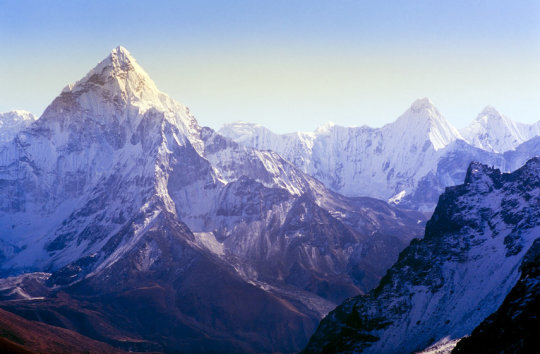
Himalaya Mountains. Credit: © THPStock / Fotolia
An international team of scientists has shed new light on the earthquake that devastated Nepal in April 2015, killing more than 8,000 people.
A study published in the journal Nature Geoscience shows that a kink in the regional fault line below Nepal explains why the highest mountains in the Himalayas are seen to grow between earthquakes. This kink has created a ramp 20km below the surface, with material constantly being pushed up and raising the height of the mountains.
The researchers, from the UK's Centre for the Observation and Modelling of Earthquakes, Volcanoes and Tectonics (COMET), as well as academics from the USA and France, also demonstrate that the rupture on the fault stopped 11km below Kathmandu. This indicates that another major earthquake could take place within a shorter timeframe than the centuries that might be expected for the area.
Lead author Dr John Elliott of Oxford University, a member of the COMET team, said: 'Nepal has some of the highest mountain ranges in the world that have been built up over millions of years because of the collision of India with Asia. But the way in which mountains grow and when this occurs is still debated.
'We have shown that the fault beneath Nepal has a kink in it, creating a ramp 20km underground. Material is continually being pushed up this ramp, which explains why the mountains were seen to be growing in the decades before the earthquake.
'The earthquake itself then reversed this, dropping the mountains back down again when the pressure was released as the crust suddenly snapped in April 2015.
'Using the latest satellite technology, we have been able to precisely measure the land height changes across the entire eastern half of Nepal. The highest peaks dropped by up to 60cm in the first seconds of the earthquake.'
Mount Everest, at more than 50km east of the earthquake zone, was too far away to be affected by the subsidence seen in this event.
Dr Pablo Gonzalez of the University of Leeds, a member of the COMET team, said: 'We successfully mapped the earthquake motion using satellite technology on a very difficult mountainous terrain. We developed newly processing algorithms to obtain clearer displacement maps, which revealed the most likely fault geometry at depth. Such geometry makes sense of the puzzling geological observations.'
Another key finding of the study shows that the rupture in the fault stopped 11km below Kathmandu, leaving an upper portion that remains unbroken.
Dr Elliott said: 'Using the high-resolution satellite images, we have shown that only a small amount of the earthquake reached the surface. This is surprising for such a big earthquake, which we would normally expect to leave a major fault trace in the landscape. This makes it a challenge when trying to find past earthquake ruptures, as they could be hidden.
'We found that the rupture from April's earthquake stopped 11km beneath Kathmandu, and that this sudden break is because of damage to the fault from interactions with older faults in the region. This is important because the upper half of the fault has not yet ruptured, but is continuously building up more pressure over time as India continues to collide into Nepal.
'As this part of the fault is nearer the surface, the future rupture of this upper portion has the potential for a much greater impact on Kathmandu if it were to break in one go in a similar sized event to that of April 2015.
'Work on other earthquakes has suggested that when a rupture stops like this, it can be years or decades before it resumes, rather than the centuries that might usually be expected.
'Unfortunately, there is no way of predicting precisely when another earthquake will take place. It's simply a case of countries and cities making sure they are well prepared for when it does happen.'
The research was a collaboration between scientists from the University of Oxford, the University of Leeds, the University of Cambridge, California Institute of Technology, PSL Research University (France), and engineering consultancy Arup.
The majority of the work was funded by the Natural Environment Research Council (NERC).
J. R. Elliott, R. Jolivet, P. J. González, J.-P. Avouac, J. Hollingsworth, M. P. Searle, V. L. Stevens. Himalayan megathrust geometry and relation to topography revealed by the Gorkha earthquake.Nature Geoscience, 2016; DOI: 10.1038/NGEO2623
match4lara
Published on 7 Jan 2016
Lara's family appeals for your help in finding Lara a bone marrow donor match. Visit www.match4lara.com to learn how you can help.
Gut reaction: Smart pill smells out the body's fiber factor
January 12, 2016

Smart gas sensing pills developed at RMIT University in Melbourne, Australia, can send data from inside the gut directly to a mobile phone. The first animal trials of the pills have examined the impact of low and high-fiber diets on intestinal gases and offer new clues for the development of treatments for gut disorders. Credit: RMIT University
Researchers have conducted the first ever trials of smart pills that can measure intestinal gases inside the body, with surprising results revealing some unexpected ways that fibre affects the gut.
Intestinal gases have been linked to colon cancer, irritable bowel syndrome (IBS) and inflammatory bowel disease (IBD), but their role in health is poorly understood and there is currently no easy and reliable tool for detecting them inside the gut.
The first animal trials of smart gas sensing pills developed at Australia's RMIT University -- which can send data from inside the gut directly to a mobile phone -- have examined the impact of low and high-fibre diets on intestinal gases and offer new clues for the development of treatments for gut disorders.
Lead investigator Professor Kourosh Kalantar-zadeh, from the Centre for Advanced Electronics and Sensors at RMIT, said the results reversed current assumptions about the effect of fibre on the gut.
"We found a low-fibre diet produced four times more hydrogen in the small intestine than a high-fibre diet," Kalantar-zadeh said.
"This was a complete surprise because hydrogen is produced through fermentation, so we naturally expected more fibre would equal more of this fermentation gas.
"The smart pills allow us to identify precisely where the gases are produced and help us understand the microbial activity in these areas -- it's the first step in demolishing the myths of food effects on our body and replacing those myths with hard facts.
"We hope this technology will in future enable researchers to design personalised diets or drugs that can efficiently target problem areas in the gut, to help the millions of people worldwide that are affected by digestive disorders and diseases."
The trials revealed different levels of fibre in a diet affected both how much gas was produced and where it was concentrated in the gut -- in the stomach, small intestine or large intestine.
The smart pills were trialled on two groups of pigs -- whose digestive systems are similar to humans -- fed high and low-fibre diets. The results indicate the technology could help doctors differentiate gut disorders such as IBS, showing:
• high-fibre diets produce more methane gas in the large intestine than the low-fibre diet, suggesting that painful gut gas retention could be avoided by cutting back on high-fibre food
• low-fibre diets produced four times more hydrogen gas in the small intestine than high-fibre, indicating a high-fibre regimen could be better for patients with IBS caused by bacterial overgrowth in small intestine
• the ratio of carbon dioxide and methane gases remained the same in the large intestine for both diets, suggesting that neither diet would be helpful for people suffering IBS diseases associated with excess methane concentration
Kourosh Kalantar-zadeh, Chu K. Yao, Kyle J. Berean, Nam Ha, Jian Zhen Ou, Stephanie A. Ward, Naresh Pillai, Julian Hill, Jeremy J. Cottrell, Frank R. Dunshea, Chris McSweeney, Jane G. Muir, Peter R. Gibson. Intestinal Gas Capsules: A Proof-of-Concept Demonstration.Gastroenterology, 2016; 150 (1): 37 DOI:10.1053/j.gastro.2015.07.072
Survey finds 73% of young people in U.S. unaware of stroke symptoms
January 11, 2016
Up to three hours after a person experiences the first symptom of a stroke is often referred to as the "golden window." That's the period of time doctors say is crucial for patients to get to a hospital to receive medical care in order to restore blood flow to the brain and minimize or reverse damage.
But a new national survey by Ronald Reagan UCLA Medical Center shows that younger patients, those under the age of 45, may underestimate the urgency of stroke symptoms and most say they would likely delay going to the hospital for help.
"Timely treatment for stroke is probably more important than for almost any other medical problem there is," said David Liebeskind, MD, professor of neurology, Director of Outpatient Stroke and Neurovascular Programs and Director of the Neurovascular Imaging Research Core at Ronald Reagan UCLA Medical Center. "There is a very limited window in which to start treatment because the brain is very sensitive to a lack of blood flow or to bleeding, and the longer patients wait, the more devastating the consequences."
Researchers asked more than a thousand people nationwide what they would be likely to do within the first three hours of experiencing weakness, numbness, difficulty speaking or difficulty seeing, all common symptoms of a stroke. Among those under age 45, only about one out of three said they would be very likely to go to the hospital. A staggering 73 percent said they would likely wait to see if their symptoms improved.
"That's a real problem," said Liebeskind. "We need to educate younger people about the symptoms of stroke and convince them of the urgency of the situation, because the numbers are going up."
In fact, since the mid-1990's, the number of young adults between 18-45 discharged from U.S. hospitals after suffering a stroke has jumped as much as 53 percent. It's estimated someone has a stroke about every 40 seconds in the U.S., totaling nearly 800,000 new stroke patients a year.
In 2007, Jennifer Reilly was one of them. "I woke up in the middle of the night with an excruciating headache," said Reilly. "I was 27 years old, pretty active, pretty healthy and was not prone to headaches. I thought it was a really odd thing that happened."
After arriving at work that day, Reilly shared her story with a co-worker who insisted she go to the hospital immediately. Reilly eventually ended up at Ronald Reagan UCLA Medical Center where Liebeskind told her she'd had a stroke. "I was really skeptical," said Reilly. "I didn't have any of what I thought were the classic symptoms of a stroke, nor did I fit the classic description of a stroke patient. I was 27 and healthy."
Reilly says weeks before the headache, she would also experience numbness periodically in one of her hands. "Half ofmy left hand would turn numb, from just one second to the next," she said, "but, once again, I brushed it off as if it was nothing."
Tests showed Reilly's stroke was caused by a rare condition called moyamoya that slowly causes certain blood vessels in the brain to narrow over time. Most patients, about 85 percent, suffer what are known as ischemic stroke, during which arteries in the brain become blocked, cutting off oxygen.
Ischemic stroke can happen to anyone at any age, and is often associated with high blood pressure, diabetes, smoking and obesity. "The good news is, there are steps we can take to lower our risk of stroke," said Liebeskind. A healthy diet and regular exercise, as well as not smoking and limiting alcohol consumption, have all been shown to lower your risk of stroke.
Just as important as knowing what puts you at a higher risk for stroke, is knowing the symptoms when you see them. Doctors urge you to know the signs of stroke and act "FAST."
If you or someone near you experiences:
Face drooping
Arm weakness or
Speech difficulty,
it's Time to call 000
"Believe it or not, it's on the order of minutes or hours when somebody has to seek medical attention," said Liebeskind. "There simply is no time to wait. It's a message that we clearly need to get to younger people more effectively."
The above is reprinted from materials provided by Ronald Reagan UCLA Medical Center.
Review of Medicare Benefits Schedule
Media Release: The Hon Sussan Ley MP; Minister for Health,Minister for Aged Care, Minister for Sport
The Government is committed to working with health professionals and patients to build a Medicare Benefits Schedule that is based on contemporary clinical practice.
This is evidenced by our clinician-led Taskforce reviewing all 5700 items on the MBS, many of which have not been updated or assessed in decades, or at all.
Recent public consultation undertaken as part of the MBS Taskforce’s work demonstrates the important support amongst health professionals for this clinical process, with over 93 per cent surveyed agreeing parts of the MBS were out-of-date and required review.
This intensive work is being undertaking in stages over a 2 year period, with the MBS Taskforce’s first round of advice now available for public consultation until 8 February 2015 here
This first stage of work has provided recommendations about the immediate removal of lower-volume MBS items in some specific specialities where there is clinical consensus that they are ‘obsolete’ and no longer represent clinical best-practice. These are also items that clinical experts deem will not have adverse impacts on a patient’s access to health services if removed.
Reasons range from more-clinically appropriate and/or efficient technologies and procedures already listed on the MBS through to patient safety, unnecessary doubling-up of item claims and decreasing usage.
For example, in diagnostic imaging, invasive tests to diagnose blood clots in the lower leg or gall bladder problems have now been replaced by non-invasive ultrasound technology.
There are 23 MBS items in total recommended for removal in this first stage of work from a handful of specialities, including:
• Diagnostic imaging – 7 items
• Ear, nose, and throat surgery – 9 items
• Gastroenterology – 5 items
• Obstetrics – 1 item
• Thoracic medicine – 1 item
These 23 MBS items were used a combined total of 52,500 times in 2014-15, worth $6.8 million in Medicare benefits paid.
As part of our commitment to consultation throughout this process, the Taskforce will now seek further views on the 23 MBS items they have recommended for removal before final decisions are made.
It is important to understand that this is not by any means a comprehensive or complete list of final findings about the final makeup of the MBS.
Never has such a comprehensive review of all 5700 items on the MBS been undertaken since Medicare’s inception in the 1980s and many more items will require more in-depth, complex evaluation.
It is also important to remember further advice from the Taskforce will not just focus on the removal of items from the MBS altogether, but also maintaining clinically-relevant MBS items, the addition of new MBS items where appropriate, and more intricate changes around the rules governing the eligibility and use of an MBS item for a particular patient cohort.
The work of the MBS Review is part of the Turnbull Government’s commitment to an integrated approach to health policy development and complements our concurrent review of primary health care and policy work to improve private health insurance for consumers, as well as our bold plans to transform mental health service delivery.
My number one priority for this MBS review has always been, and remains, building a healthier Medicare for Australian patients, health professionals and taxpayers and I am determined to deliver it.
Religious decline does not equal moral decline, says researcher
January 13, 2016
Morality is not rooted in religion and religion matters less for moral values now than it did thirty years ago, says a University of Manchester researcher.
Dr Ingrid Storm's findings, based on her analysis of European survey data, found that religious decline does not equal moral decline.
According to Dr Storm, whose research is published in Politics and Religion, involvement in religion makes most difference to morality in the most religious countries, and matters less for moral values now than it did in the 1980s.
"Religion has been in sharp decline in many European countries. Each new generation is less religious than the one before, so I was interested to find out if there is any reason to expect moral decline" she said.
Her study found that religion is only related to some moral values, and more so in religious countries and when people do not trust the state.
The respondents to questionnaires in 48 European countries over the period from 1981 to 2008 were asked how often they would justify various contentious behaviours, which she classified into two moral dimensions.
The first is about the individual going against tradition, for example it includes justifying abortion and homosexuality. The second moral dimension is more about justifying behaviours that are against the law and could harm others, such as lying, cheating and stealing.
Dr Storm said: "More Europeans are now willing to justify behaviours that go against tradition, but attitudes have not changed when it comes to breaking the law or harming others.
"As religion has declined in Europe there has also been an increase in acceptance of personal autonomy on issues concerning sexuality and family. Each generation is more liberal on these issues than the one before. In contrast, we find no evidence that moral values have become more self-interested or anti-social."
The research also found that religious people are slightly less self-interested on average, but this can largely be accounted for by their age. This is because the average religious person is older than the average nonreligious person, and older people, whenever they were born, are less likely to justify self-interest values.
"Religious faith and worship also makes most difference to morality in the most religious countries. To be effective, religious norms need to be validated by a moral community of other religious friends and family and social and political institutions" concluded Dr Storm.
Ingrid Storm. Morality in Context: A Multilevel Analysis of the Relationship between Religion and Values in Europe. Politics and Religion, 2015; 1 DOI: 10.1017/S1755048315000899
Priorities

Disclaimer: These articles are not intended to provide medical advice, diagnosis or treatment. Views expressed here do not necessarily reflect those of Pittwater Online News or its staff.
SICK AND INJURED NATIVE ANIMALS
Hot and dry conditions that summer is known for means our native animals suffer. If you come across a native animal that is sick or injured please call one of the following rescue groups:
Sydney Wildlife 02 9413 4300
WIRES 1300 094 737

Have your say on a new sand quarry in Williamtown
Date: 04.12.2015: Departmental Media Release -Department of Planning and Environment
A proposal to construct a new sand quarry in Cabbage Tree Road, Williamtown will be on exhibition from today for community feedback.
The Department of Planning and Environment is keen to hear the community’s views on the application which seeks to:
construct and operate a sand quarry to extract up to 600,000 tonnes per year from a total amount of 3.32 million tonnes
clear 53.9 hectares of vegetation
carry out mobile screening and dry processing on site
construct associated infrastructure including:
roads for site access; an office; amenity buildings; weighbridge; staff and visitor parking; maintenance shed; transport processed material off-site via public roads; progressively rehabilitate the site.
A spokesperson for the Department of Planning and Environment said the local community always has an opportunity to share their views.
“Community consultation is an integral part of the planning process and the applicant will have to respond to the feedback we receive and this is taken into consideration when we develop our recommendations,” the spokesperson said.
“It’s easy to participate by going online and we encourage everyone to take a look and have their say.”
To make a submission or view the Environmental Impact Statement (EIS), visit www.majorprojects.planning.nsw.gov.au.
Submissions can be made from Friday 4 December 2015 until Monday 1 February 2016.
Written submissions can also be made to:
Department of Planning and Environment, Attn: Director- Resource Assessments, GPO Box 39, Sydney NSW 2001
The application and EIS is also available to view in person at:
Department of Planning and Environment, 23-33 Bridge Street, Sydney
Port Stephens Council, 116 Adelaide Street (Old Pacifica Highway), Raymond Terrace
Nature Conservation Council, Level 2, 5 Wilson Street, Newtown.
________________
Direct link: majorprojects.planning.nsw.gov.au/actionjobid=6125